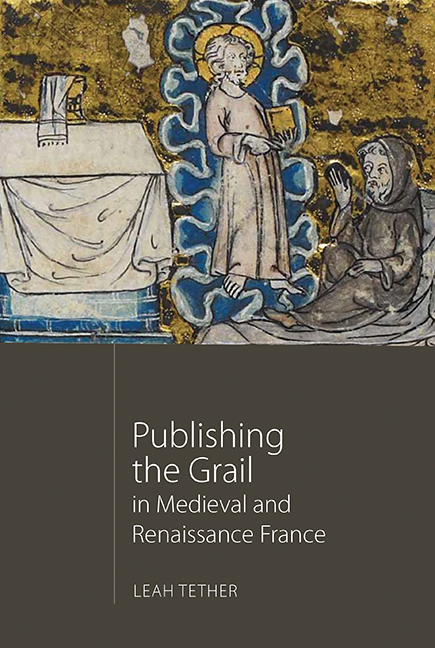Book contents
- Frontmatter
- Contents
- List of Illustrations
- Acknowledgements
- List of Abbreviations
- Miscellaneous Frontmatter
- Introduction: Grail Literature in France c. 1180–1530
- 1 Publishing in the Middle Ages and the Renaissance
- 2 Blurbing the Grail
- 3 Disclosing the Author
- 4 Re-packaging the Grail
- 5 Patronage and Promotion
- Conclusion
- Appendix: Timelines of Composition and Production
- Bibliography
- Index
- Arthurian Studies
- Frontmatter
- Contents
- List of Illustrations
- Acknowledgements
- List of Abbreviations
- Miscellaneous Frontmatter
- Introduction: Grail Literature in France c. 1180–1530
- 1 Publishing in the Middle Ages and the Renaissance
- 2 Blurbing the Grail
- 3 Disclosing the Author
- 4 Re-packaging the Grail
- 5 Patronage and Promotion
- Conclusion
- Appendix: Timelines of Composition and Production
- Bibliography
- Index
- Arthurian Studies
Summary
In the chapters of this study so far, the importance of patronage has been underlined several times, and its significance pertains to several functions in terms of a text's publication. In Chapter 1, for example, we saw patronage play a central role in defining a text's initial moment of publication, as well as in providing the preliminary permission for the text's further dissemination – that which Riddy referred to as the ‘authorial mode’ (cf. p. 20). In Chapter 2, we witnessed the frequent presentation of patronage within ‘blurbs’ and, in Chapter 3, we saw patronage often depicted, visually and textually, as playing a key part in validating an author's authority. Finally, in Chapter 4, we learnt that textual compilation had a given volume's patron at its heart, being a physical reflection of his or her agenda through the careful and calculated assembly of a book's contents. Patronage in its various incarnations, therefore, is closely linked to everything from the genesis of texts to their initial publication and marketing, as well as from their reception amongst audiences to their eventual re-packaging, re-publication and re-marketing. It is one of the unifying elements of this study, and it thus presents itself as a germane subject with which to complete this analysis of publication within French Grail texts.
Patronage in the Middle Ages and Renaissance seems, at first glance, to be a commonly understood concept: one attracting scholars from across various disciplines, such as book history, bibliography, literary studies, cultural history, social history and more. Owing to the subject's breadth of coverage, patronage in this period is broadly understood to involve the creation of a literary product in order to please a patron, often at his or her behest, and frequently in exchange for something of value, be that financial remuneration, status or influence. But for all the straightforwardness implied by this, it transpires to be difficult to find a scholarly source that states it this plainly. The reason for this, I suggest, is rooted in the existence of a conflation of identities that muddies the waters. There are, I contend, at least two – if not three – different kinds of patrons at work in our period of concern. These various patrons conduct discrete relationships in the world of book production, whilst often co-existing at various moments in time.
- Type
- Chapter
- Information
- Publishing the Grail in Medieval and Renaissance France , pp. 139 - 170Publisher: Boydell & BrewerPrint publication year: 2017

